
views
Deciding to Breed Pit Bulls

Determine why you want to breed pit bulls. Think carefully about the reasons why you want to breed your pit bull. Perhaps you want puppies, or maybe your pit bull is a purebred. Breeding a dog can be expensive. You will have to take good care of your pregnant female, pay for multiple vet visits, and supervise the puppies during their first weeks of life. Make sure that you are dedicated to the idea before you begin. Pit bulls are one of the most commonly surrendered dogs. In some areas, they can compose up to 40% of the homeless dog population, and many of these dogs are euthanized in shelters. Adopting a pit bull can not only be a cost effective option for many people but it can also save a life.

Research your local laws. Some areas have breed-specific laws that outlaw the ownership or breeding of pit bulls. Even if pit bulls are allowed in your town, you may be required to muzzle them while out. Look up your local laws, and make sure that you comply with them.

Ascertain what breed you want. There are several different breeds of dogs collectively known as pit bulls. If you want a particular breed of pit bull, you should make sure that both parents are of that breed. If you do not do this, you may have a mixed litter. The most common breeds of pit bulls include: American Pit Bull Terriers American Staffordshire Terriers Staffordshire Bull Terriers You may want to check that the parents are registered with the American Kennel Club. This will ensure that the parents are purebred and that they really belong to their breed. It will also increase the value of the puppies if you are planning on selling them.
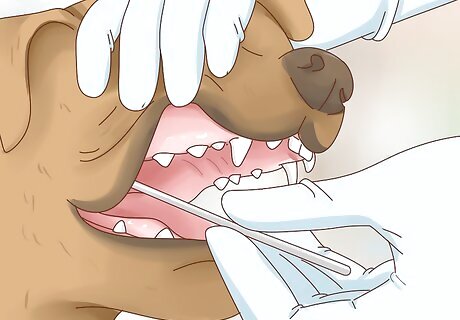
Test your dogs for genetic problems. Even if your dog has no outward problems, recessive genetic disorders can arise during breeding. You should have both the female and male dogs genetically tested to look for any potential diseases that could arise. While pit bulls are not known to have many problems, they can face the following issues: Hip Dysplasia Elbow Dysplasia Autoimmune Thyroiditis NCL-A (Cerebellar Ataxia) Eye problems Heart problems

Locate potential adopters. Before you begin the mating process, you should find homes for the puppies first. Realize that you might have a litter of seven to ten puppies, and each will need a home. If you start looking for homes early, you can find a replacement home should a potential adopter back out. You can advertise online, through a local kennel club, or through your vet.
Mating Your Dogs
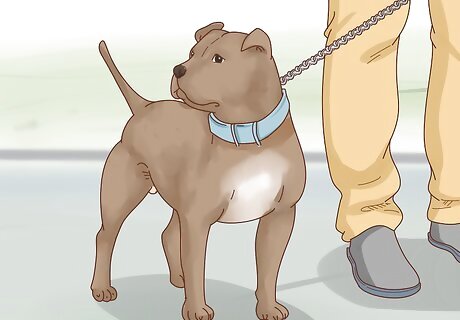
Hire a stud. If you do not have a male pit bull, you can hire a stud from another breeder. You will have to pay stud fees and negotiate a contract with the owner beforehand. The stud can physically mate with your female dog, or he can be used for artificial insemination. Local kennel clubs can put you in touch with reputable breeders. Always make sure that you are hiring from a reputable, responsible breeder. Ask to see the dog, and verify its temperament first. Make sure it has no aggression or behavioral problems. If you are looking to breed purebred puppies, be sure to ask for proof of the stud's pedigree up front. Always make sure to have a written contract between you and the breeder beforehand. The owner of the stud may request that your dog is tested for disease first.
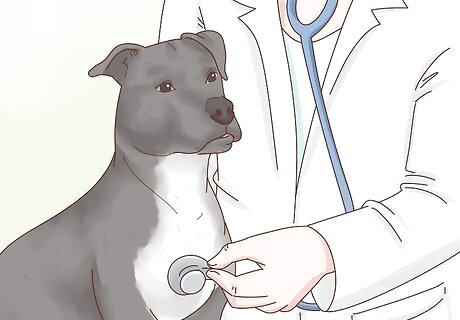
Take the pit bulls to the vet. Before you try to mate the dogs, you should have the dogs examined by a vet. Talk to your vet about your plans to breed the pit bulls. The vet will be able to examine the dog for common problems and let you know if the dogs are ready to mate. If you are hiring a stud, you should ask the stud's owner to take the stud to a vet. Ask for documentation showing the stud's health, including any potential health or behavioral problems that could pass onto the puppies. The vet can also provide personalized advice on your dog's diet, health, and exercise over the course of the pregnancy.
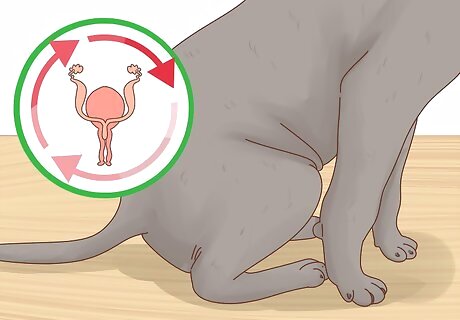
Watch for the female to go in heat. Female pit bulls tend to go into heat twice a year, and each one will last about three weeks. During this, you will notice that her vulva is swelling and discharging liquid. Your pit bull cannot mate until about two weeks into this cycle. At this point, you may notice that: Her discharge is turning from a bloody red to clear or brownish. She is beginning to show interest in mating. She is releasing a smell that will attract male dogs Her tail moves to the side to make room for a male dog.
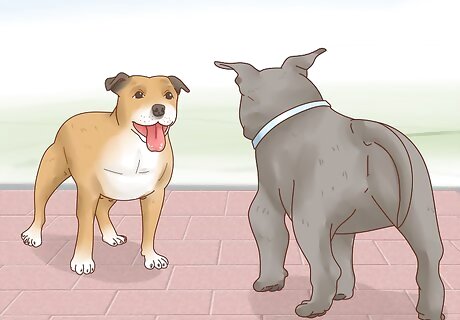
Introduce the female to the stud. Leave the female and male pit bulls together. You may notice the male mounting the female. The male will begin to thrust, and then remain attached to the female for between ten and thirty minutes. Do not attempt to separate the dogs at this point. This is a natural part of the mating process. If you have hired a stud, you may find it to be easier to take the female to the male. This is because the male may be less likely to mate in an unfamiliar environment than a female in heat.
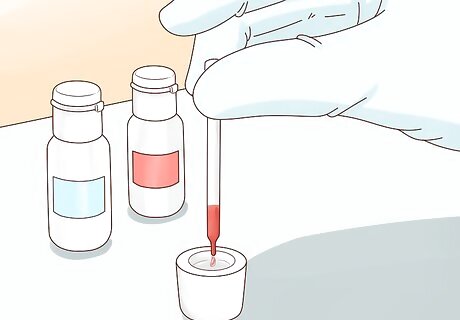
Test the female dog's progesterone levels. If you are having difficulty mating pit bulls, you may want to check the progesterone levels of the female. Progesterone is a hormone that is released when the pit bull is ready to mate. This test can help you find the proper timing for breeding or it can diagnose a problem that might interfere with breeding. Ask your vet if you can have your dog tested.
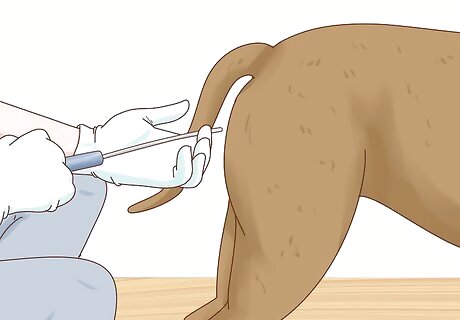
Consider artificial insemination. Dogs can be artificially inseminated too. You can use a stud that you have personally chosen, or you can use semen from a sperm bank that has been frozen. Ask your vet if they offer reproductive services for dogs or if they can refer you to someone who can provide you this service. If you are using frozen semen, you may want to check that it has been DNA certified by a kennel club. Artificial insemination can cost hundreds of dollars. Freezing and storing semen may incur additional costs.
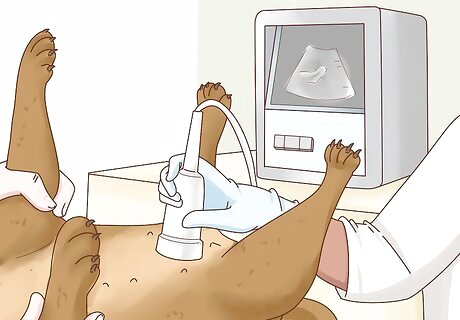
Confirm the pregnancy. You may notice a growing appetite, larger nipples, or an increase in weight in your pit bull. These are not surefire signs of pregnancy, however. The only way to be absolutely certain that a dog is pregnant is to have her checked out by a vet. Typically, a blood test or ultrasound will be performed. This test can typically be done between 28 and 32 days after the dog has mated. A false pregnancy is one in which the pit bull displays the typical pregnancy behaviors but is not pregnant. If you suspect your pit bull is pregnant, take her to a vet and have her tested. A false pregnancy may be the sign of another problem.
Caring For a Pregnant Pit Bull

Give the mother a well-rounded diet. You do not necessarily have to feed your dog significantly more during pregnancy. Instead, make sure that she is receiving a well-rounded diet with adequate amounts of calcium and phosphorus. In the last few weeks of pregnancy, gradually increase your pit bull's food by 15 to 20%. You can feed your dog a store-bought dog food. Read the nutritional information, and make sure that it is at least 29% protein and 17% fat. Check that her food contains calcium and phosphorus to promote lactation. It should have between 1-1.8% calcium and .8-1.6% phosphorus.
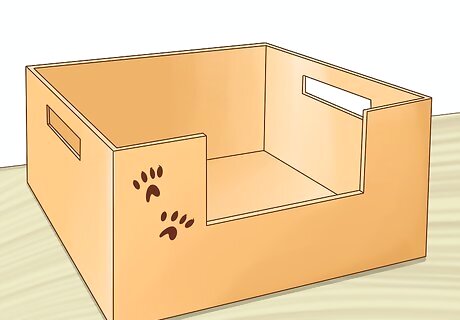
Find a whelping box. A whelping box is a special bed that your dog will give birth in. You can buy a whelping box from a pet store or online. You can also build your own. Place the box in a warm, dry area, where the dog can rest quietly after giving birth. You should line this box with newspaper when your dog is preparing to give birth. These can be changed easily when soiled. After birth, you can replace it with bath mats or blankets. Once the whelping box is ready, you should lead your dog to the box. Do this early in the pregnancy so that your dog grows comfortable and used to it. This will allow the dog to naturally select the whelping box when giving birth.
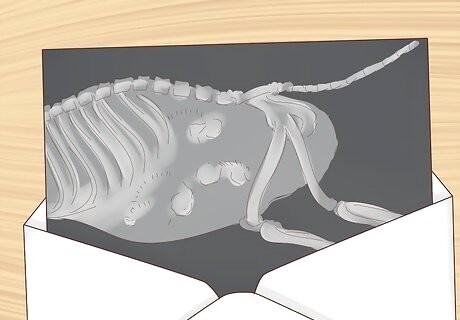
Determine the litter size. There are a few different ways to estimate the dog's litter size during pregnancy. While none of these are completely accurate, they can help you prepare for the number of puppies you may have at the end of your dog's pregnancy. Ask your vet about: Abdominal Palpitation: beginning at around day 28 of the pregnancy, your vet may start to feel your pit bull's stomach to see how many sacs are in her uterus. This is easier earlier in the pregnancy than later. Radiography: your vet will use X-rays to count how many fetal skeletons are in your dog's uterus. This is the most effective way of determining litter size. It can be done around day 45 of the pregnancy. Ultrasound: your vet will use sound waves to determine if your pit bull is pregnant, although it may not be able to accurately determine the litter size. It can be done around day 30.
Delivering the Puppies

Watch for the mother to go into labor. A few days before your pit bull is ready to give birth, she will start to build a nest in her whelping box. Start taking the dog's temperature. You may notice a drop to below 100 °F (38 °C). Within twenty-four hours of this change, the dog's cervix may dilate. This means she is ready to give birth. In most cases, your pit bull will need no assistance in giving birth. That said, you should supervise the birth closely in case a problem arises.

Count puppies and placentas. When the puppies are born, they will be inside membrane sacs. Your pit bull should begin licking them. This will help the puppies breathe while removing their sacs. You should try to make sure that there is one sac and placenta for every puppy. If there isn't, there may be a placenta stuck in your dog. Call your vet if this happens. If your pit bull does not remove the sack, you should open it yourself. With your fingers, gently break the membrane near the puppy's head, and peel it backwards. Remove any fluids from around the puppy's mouth and nose. You can rub the puppy with a towel to help it breathe.

Consult a vet if a problem arises. You should be alert for any problems that might arise during your dog's delivery. Have the vet's number handy just in case something goes wrong. You may even want to have an emergency number in case the puppies are born during off hours. Call your vet if: Thirty minutes of contractions happen without a puppy appearing The dog does not go into labor within twenty-four hours of her temperature dropping The dog has been pregnant more than seventy days The dog appears to be in extreme pain Hours pass without the dog giving birth to all of her puppies
Raising the Puppies
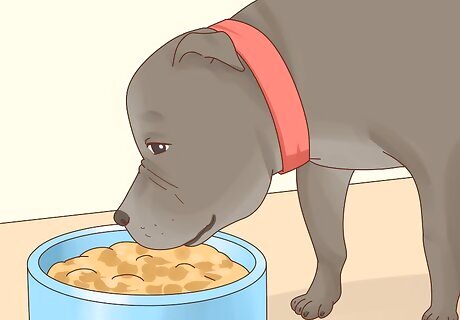
Feed the mother plenty of food. During the first day or two, the mother may not want to eat much. That said, her appetite will return. By three weeks, the mother may be eating up to four times her normal diet. It is important that the mother eats frequently. Break up her food into four meals throughout the day.
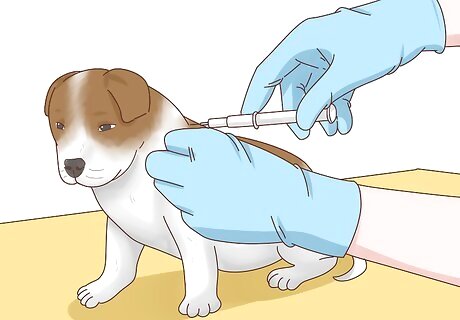
Get the puppies their shots. Between six and eight weeks, the puppies will need their first round of shots. You may decide to get them their shots before sending them to their new homes. Be sure to remind the new owners that the puppies will require more shots at ten weeks. Shots needed at six weeks vaccinate against: Distemper Measles Parainfluenza Bordetella
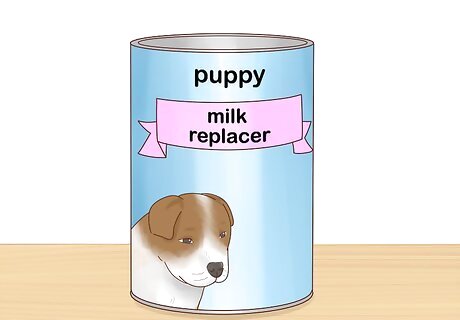
Wean the puppies. The puppies will be ready to wean from their mother's milk at around three or four weeks of age. Mix a puppy milk replacer with an equal amount of water. With your finger, wet their mouth with this mix. After a few days, you can crumble puppy food into this mixture. Your puppies should be eating solid food only by six weeks old.

Socialize the puppies. It is important to socialize pit bull puppies while they are young. This can prevent aggression later in life. Whether it is deserved or not, pit bulls do have a reputation of being an aggressive breed, but that does not mean that your puppies will turn out that way. You can prevent aggressive behavior through training and handling. Hold, play, and interact with the puppies often. Separate puppies if they are fighting, mounting, or biting. Introduce the puppies to strangers often.
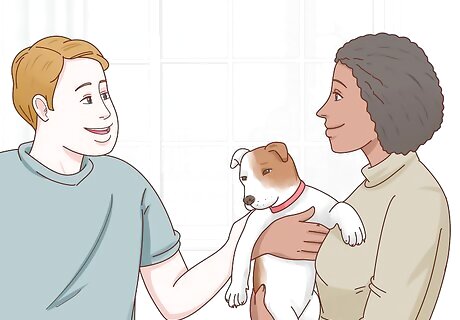
Deliver the puppies to their new homes. Once the puppies are weaned, they will be ready to go to their new homes. This will typically be around eight weeks of age. Contact the new owners, and make sure that each puppy has a home to go to. Do not abandon un-adopted puppies at a shelter. Shelters are already overwhelmed with pit bulls, and your puppy may be euthanized.


















Comments
0 comment